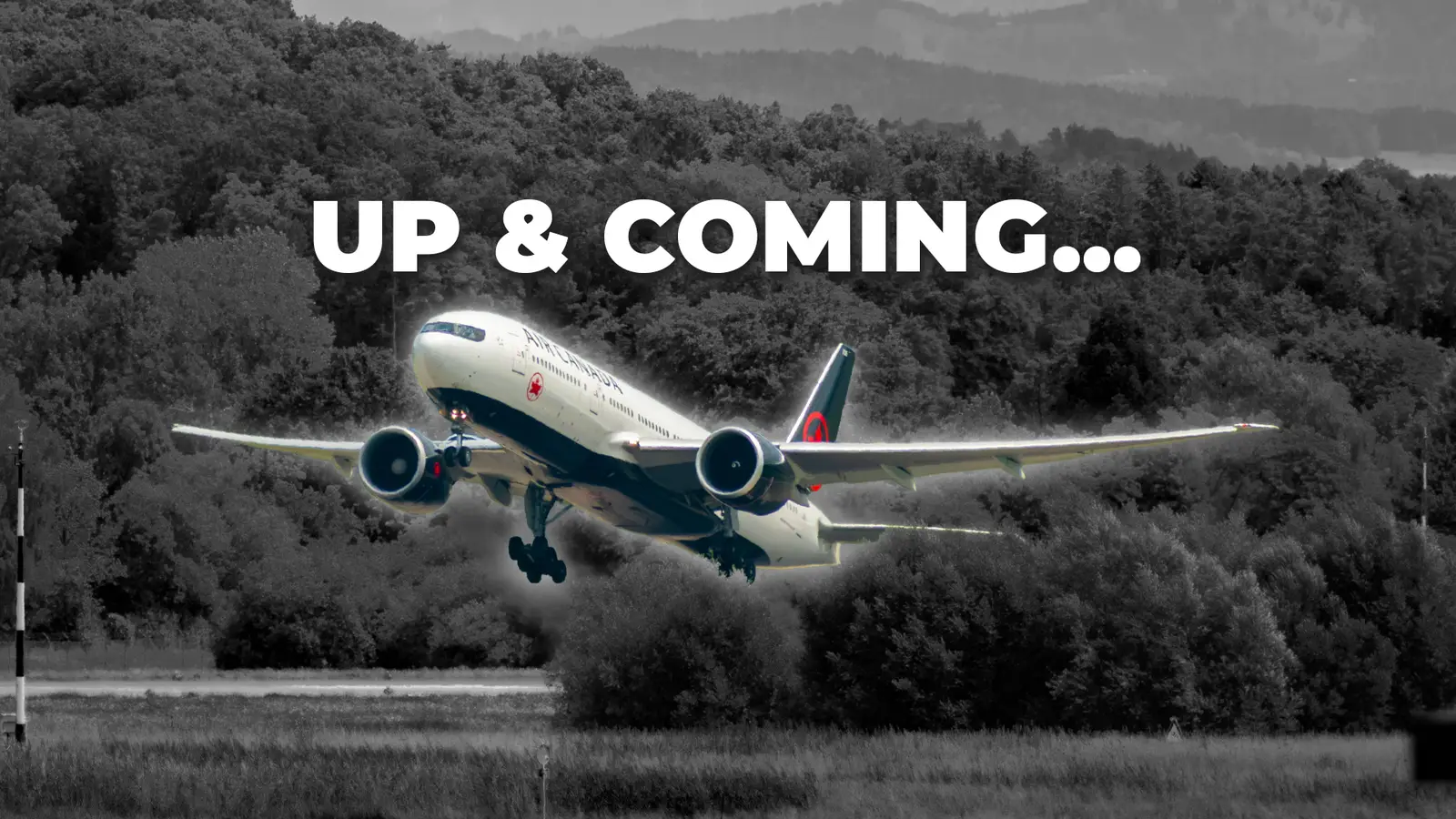
For nearly two decades, the Boeing 777-200LR has held a unique position in commercial aviation. Known as the “Worldliner,” it was built to connect distant city pairs nonstop, covering nearly any two airports on Earth under the right conditions.
Introduced in 2006, the aircraft was part of Boeing’s broader 777 family, designed to compete with the long-range capabilities of the Airbus A340 and eventually pave the way for ultra-long-haul travel with just two engines. It was a bold bet at a time when four-engine aircraft like the Boeing 747 and Airbus A340 dominated intercontinental routes. The ambition and confidence behind its launch signaled a turning point in aviation design.
The Legacy of the 777-200LR
The 777-200LR was derived from the Boeing 777-200ER but incorporated key upgrades, including reinforced landing gear, larger fuel tanks, and more powerful GE90-110B1 or GE90-115B engines. It also shared structural enhancements with the Boeing 777-300ER, including raked wingtips and a strengthened fuselage. These features gave it an unprecedented range for a twin-engine aircraft, making it an early beneficiary of the ETOPS (Extended-range Twin-engine Operational Performance Standards) certification, which allowed for operations far from diversion airports.
Boeing’s promotional nickname for the jet, the “Worldliner,” reflected its potential to fly between virtually any two cities on Earth without stopping. According to our August 2025 retrospective, the aircraft was designed for “routes that needed the absolute maximum range, often at the cost of passenger or cargo capacity.” In November 2005, Boeing staged a record-setting flight from Hong Kong to London, flying eastbound over the Pacific and North America to demonstrate the plane’s endurance. The aircraft traveled 11,664 nautical miles in 22 hours and 42 minutes, setting a world record for the longest nonstop flight by a commercial airliner.
Equipped with two massive General Electric GE90 engines and provisions for auxiliary fuel tanks, the 777-200LR boasted a range of approximately 8,555 nautical miles under commercial configurations. Airlines like Emirates, Delta Air Lines, and Pakistan International Airlines used it to open ultra-long-haul routes that were once considered impossible. However, only 61 of these aircraft were ever built. The limited production stemmed from its niche appeal and high operating costs relative to evolving market demands.
Why It’s Being Replaced
Despite its impressive range and capabilities, the 777-200LR has become increasingly difficult to justify from an operational and financial standpoint. As aircraft age, maintenance costs climb, and older technology becomes less fuel-efficient compared to newer models. With rising fuel prices, stringent emissions standards, and growing pressure for more sustainable aviation, the 777-200LR’s once-unmatched range is no longer enough.
Aviation Source News recently reported that United Airlines is eyeing the Airbus A350 to replace aging Boeing 777s, noting that the A350 offers substantial fuel economy gains and lower maintenance overhead. Meanwhile, Delta Air Lines has already retired its 777 fleet, including the -200LR, replacing them with Airbus A330-900neos and A350s. These moves are indicative of a broader industry trend toward modern, twin-engine aircraft with better economics over long-haul routes.
Enter the Successors: A350 and 777X
The two main aircraft stepping in to fill the void left by the 777-200LR are the Airbus A350-1000 and Boeing’s upcoming 777X series, particularly the 777-8 and 777-9 variants. In our July 2025 article “Airbus A350-1000 Vs Boeing 777X: Which Is Best?” we discussed how the A350-1000 offers superior range and operating economics, with 13% lower fuel burn and 16% lower cash operating costs than the 777-9, while the 777X leads in passenger capacity and cabin width.
The Airbus A350-1000 is already in widespread service, with airlines like Qatar Airways, British Airways, and Japan Airlines using it for long-haul and ultra-long-haul missions. According to Airbus, the A350-1000 has a range of 8,700 nautical miles and seats around 350 to 410 passengers in a typical two-class configuration. It is powered by the Rolls-Royce Trent XWB engine, which Airbus claims to be the most efficient large aero-engine in service.
In contrast, the Boeing 777X has yet to enter commercial service but promises to make a major impact when it does. The 777-9, the larger of the two variants, can carry up to 426 passengers and has a range of 7,285 nautical miles, while the 777-8 is expected to surpass 8,700 nautical miles.
One of its most talked-about features is its folding wingtips, which allow for improved aerodynamic efficiency without requiring airport gate modifications. Business Insider reported that Boeing test pilots explained the mechanism was designed for the 777X’s need to fit into existing airport gates used for previous-generation 777s.
Despite the optimism, the 777X has faced delays. In a 2024 Business Insider article, Emirates President Tim Clark said, “Emirates has had to make significant and highly expensive amendments to our fleet programs as a result of Boeing’s multiple contractual shortfalls, and we will be having a serious conversation with them over the next couple of months.”
Airline Decisions In Real Time
In 2024, AeroTime reported that Japan Airlines retired the first of its Boeing 777-300ER aircraft after 19 years of service, marking the beginning of a fleet-wide phase-out that will see 13 aircraft replaced by Airbus A350-1000s by 2026.
Qantas has also opted for the A350-1000 for its ultra-long-haul Project Sunrise program, which aims to launch nonstop flights between Sydney and cities like New York and London.
Air India is another carrier gradually removing the 777-200LR from its fleet. The airline is set to return five leased 777-200LR aircraft to Delta Air Lines by March 2026, marking a significant shift in its fleet strategy. According to Travel and Tour World, two of these aircraft have already been withdrawn from service.
These aircraft were instrumental in serving long-haul destinations like New York, Toronto, and San Francisco. Their departure is expected to impact Air India’s North American schedules and could result in fewer frequencies or even suspended routes in the near term.
Meanwhile, Emirates has doubled down on its faith in the Boeing 777X, placing the largest number of orders among any carrier. As of early 2024, Emirates held orders for 262 of the 481 total 777X jets on order, according to Business Insider. However, delays have sparked frustration. “I fail to see how Boeing can make any meaningful forecasts of delivery dates,” Emirates President Tim Clark said in a statement, citing inspection delays and strike actions. “Emirates has had to make significant and highly expensive amendments to our fleet programs as a result of Boeing’s multiple contractual shortfalls, and we will be having a serious conversation with them over the next couple of months.”
The Freighter Factor and Exceptions
While most 777-200LRs are being retired from passenger service, not all are being grounded permanently. AirInsight reported in 2023 that DHL Express has ordered nine converted Boeing 777-200LR freighters from Jetran, with deliveries scheduled from 2024 through 2027. These aircraft will be converted by Mammoth Freighters and will temporarily replace aging Boeing 747-400s currently hired from companies like Kalitta.
The converted freighters—dubbed the 777-200LRMF—will offer a gross payload of 106 tonnes and a range of 9,075 kilometers. DHL already operates eighteen factory-built 777Fs and has an additional ten on order. The company views the 777 as the backbone of its long-haul, large-capacity cargo operations.
In a statement reported by AirInsight, DHL said, “This agreement is part of the overall sustainability priority to modernize DHL Express’ long-haul intercontinental fleet, including the replacement of older planes. Ordering converted freighters with a shorter useful life provides an efficient bridge between current and new airframe technologies, such as new generation wide-body freighters B777-8F and A350F.”
From Worldliner to What’s Next
The Boeing 777-200LR will always be remembered as a technological marvel that pushed the boundaries of what was possible in commercial aviation. But in an industry driven by economics and efficiency, even legends must eventually pass the baton. The Airbus A350-1000 and Boeing 777X stand ready to carry that legacy forward, each bringing their own strengths to the table. Whether it’s through the composite efficiency of the A350 or the bold engineering of the 777X, the aircraft replacing the 777-200LR are not just successors; they are the new standard-bearers for a rapidly evolving era of long-haul flight.
As the aviation industry moves toward a more sustainable and economically viable future, the retirement of the 777-200LR symbolizes a broader transformation. Airlines must now balance passenger expectations, environmental responsibilities, and financial realities more than ever before. With enhanced fuel efficiency, advanced aerodynamics, and passenger-focused design, the A350 and 777X represent the next leap in aviation innovation. The days of the Worldliner may be numbered, but its pioneering spirit lives on in the wings of its successors. They are the new standard-bearers for a rapidly evolving era of long-haul flight.



